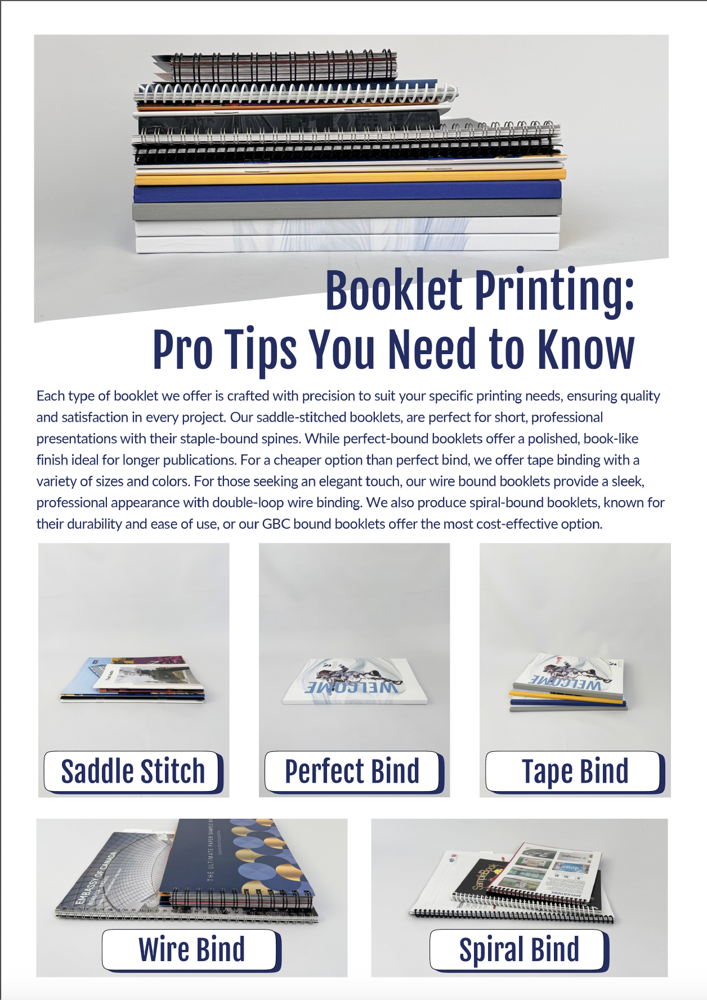
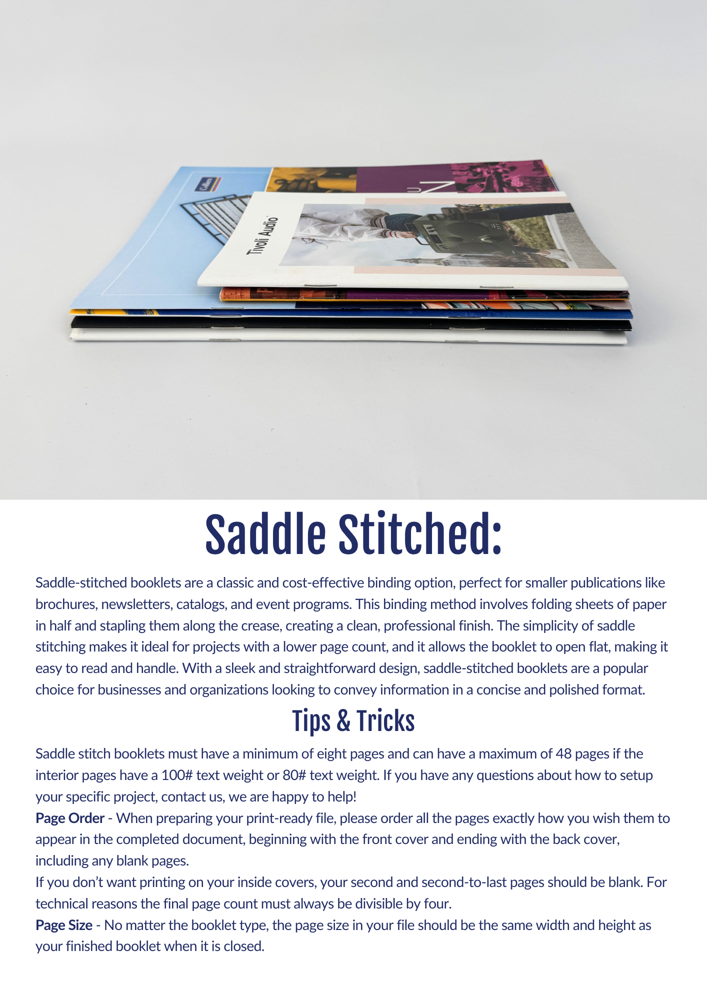
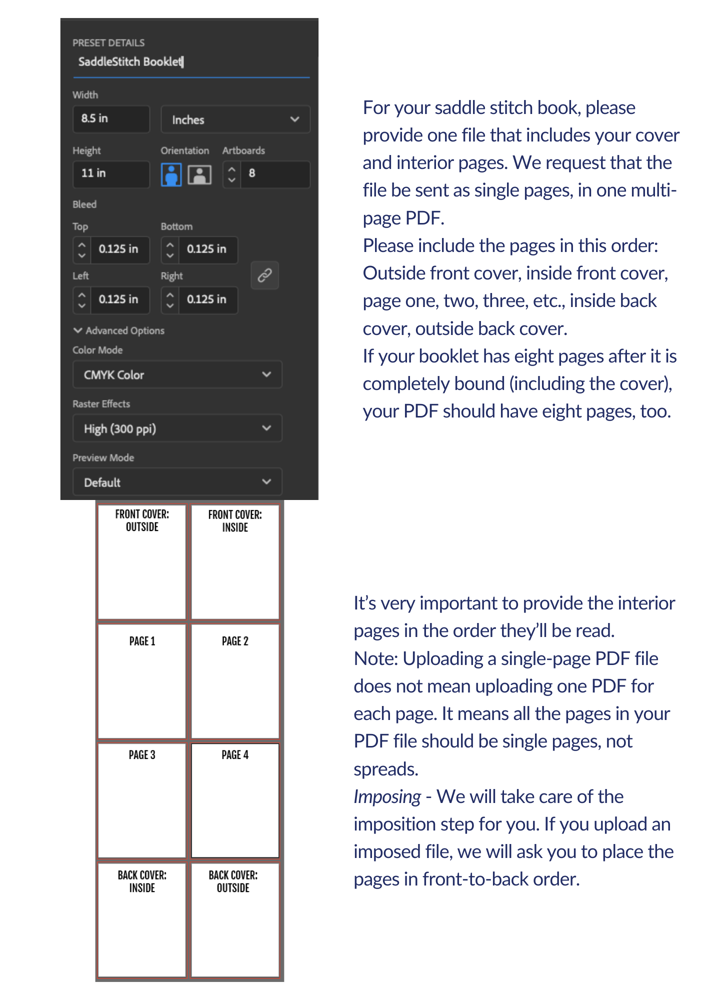

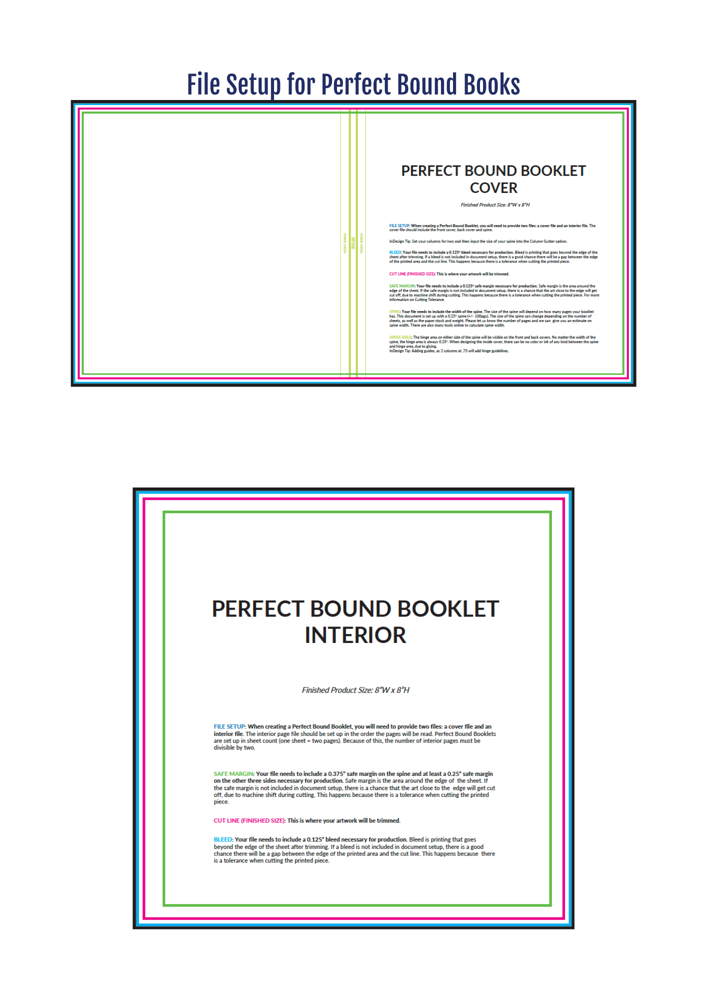



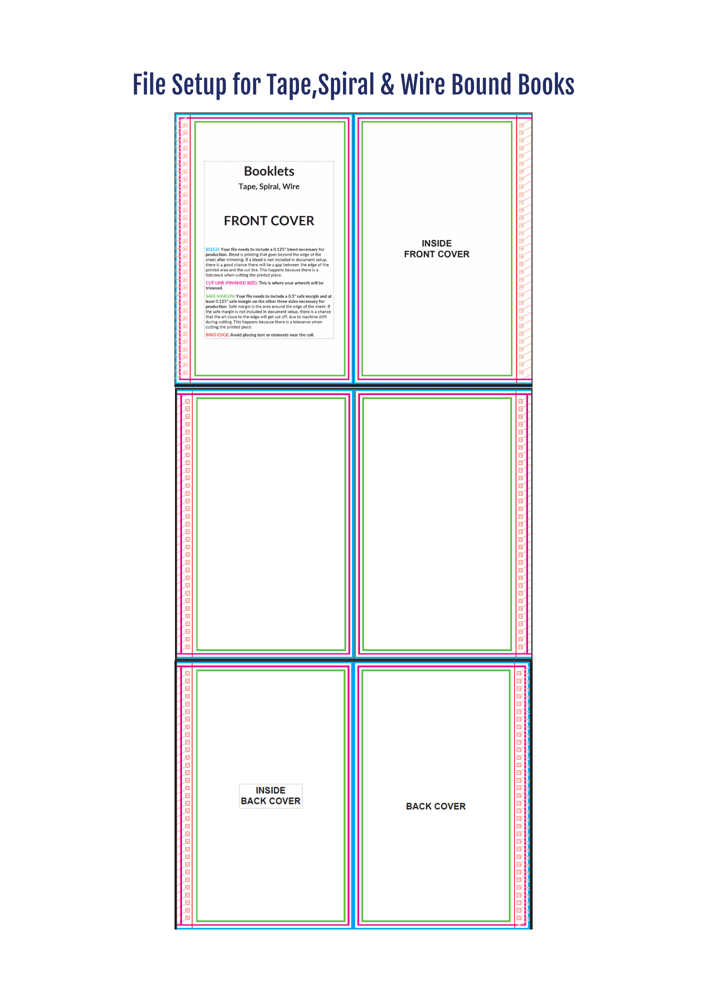

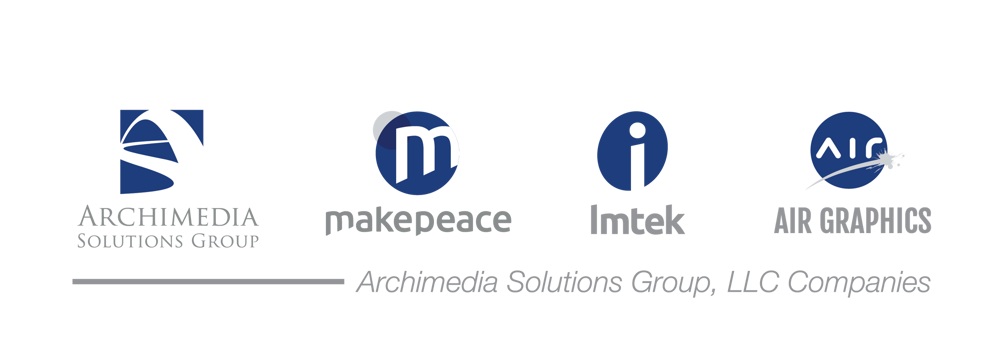
BOOKLET PRINTING: PRO TIPS YOU NEED TO KNOW
Each type of booklet we offer is crafted with precision to suit your specific printing needs, ensuring quality and satisfaction in every project. Our saddle-stitched booklets, are perfect for short, professional presentations with their staple-bound spines. While perfect-bound booklets offer a polished, book-like finish ideal for longer publications. For a cheaper option than perfect bind, we offer tape binding with a variety of sizes and colors. For those seeking an elegant touch, our wire bound booklets provide a sleek, professional appearance with double-loop wire binding. We also produce spiral-bound booklets, known for their durability and ease of use, or our GBC bound booklets offer the most cost-effective option.
SADDLE STITCHED:
Saddle-stitched booklets are a classic and cost-effective binding option, perfect for smaller publications like brochures, newsletters, catalogs, and event programs. This binding method involves folding sheets of paper in half and stapling them along the crease, creating a clean, professional finish. The simplicity of saddle stitching makes it ideal for projects with a lower page count, and it allows the booklet to open flat, making it easy to read and handle. With a sleek and straightforward design, saddle-stitched booklets are a popular choice for businesses and organizations looking to convey information in a concise and polished format.
TIPS & TRICKS
Saddle stitch booklets must have a minimum of eight pages and can have a maximum of 48 pages if the interior pages have a 100# text weight or 80# text weight. If you have any questions about how to setup your specific project, contact us, we are happy to help!
Page Order - When preparing your print-ready file, please order all the pages exactly how you wish them to appear in the completed document, beginning with the front cover and ending with the back cover, including any blank pages.
If you don’t want printing on your inside covers, your second and second-to-last pages should be blank. For technical reasons the final page count must always be divisible by four.
Page Size - No matter the booklet type, the page size in your file should be the same width and height as your finished booklet when it is closed.
For your saddle stitch book, please provide one file that includes your cover and interior pages. We request that the file be sent as single pages, in one multi-page PDF.
Please include the pages in this order:
Outside front cover, inside front cover, page one, two, three, etc., inside back cover, outside back cover.
If your booklet has eight pages after it is completely bound (including the cover), your PDF should have eight pages, too.
It’s very important to provide the interior pages in the order they’ll be read.
Note: Uploading a single-page PDF file does not mean uploading one PDF for each page. It means all the pages in your PDF file should be single pages, not spreads.
Imposing - We will take care of the imposition step for you. If you upload an imposed file, we will ask you to place the pages in front-to-back order.
PERFECT BOUND:
Perfect bound booklets offer a professional and durable binding solution that combines aesthetic appeal with practicality. Unlike saddle-stitching, perfect binding uses a strong adhesive to secure the pages and the cover, resulting in a sleek, square spine that allows for easy stacking and a polished appearance. This method is ideal for thicker publications, such as catalogs, magazines, and reports, as it can accommodate a higher page count while maintaining a streamlined look. Additionally, perfect bound booklets are more resistant to wear and tear, ensuring that they remain intact and visually appealing over time, making them an excellent choice for showcasing content that needs to make a lasting impression.
TIPS & TRICKS
FILE SETUP: When creating a Perfect Bound Booklet, you will need to provide two files: a cover file and an interior file. The cover file should include the front cover, back cover and spine. The interior file should include all interior pages.
InDesign Tip: Set your columns for two and then input the size of your spine into the Column Gutter option.
BLEED:Your file needs to include a 0.125” bleed necessary for production. Bleed is printing that goes beyond the edge of the sheet after trimming. If a bleed is not included in document setup, there is a good chance there will be a gap between the edge of the printed area and the cut line. This happens because there is a tolerance when cutting the printed piece.
TAPE BOUND:
Tape-bound booklets are a sleek and minimalist binding option that combines durability with a clean, polished appearance. Using a strong adhesive tape along the spine, these booklets offer a secure and flexible binding solution, making them ideal for reports, portfolios, and presentation materials. The flat spine gives them a professional look, while the binding allows for easy stacking and storage. Tape-bound booklets are an excellent choice when you need a cost-effective, yet refined, method to present your documents.
TIPS & TRICKS
Tape binding provides an elegant appearance with a robust bind using specialized thermal-activated glue strips. Tape-bound books stack neatly on the bookshelf for easy organization and are ideal for sliding in and out of backpacks or totes for on-the-go learning.
Tape:
Black, White, Light Gray, Yellow, & Blue
Additional Colors limited to narrow sizes:
Red, Purple, Green
WIRE BOUND:
Wire-bound booklets are versatile and durable, offering a practical solution for documents that require easy access and long-lasting use. They are bound with a metal coil that allows the pages to lie flat when opened, making them ideal for presentations, manuals, and instructional materials. The wire binding ensures that the pages remain secure and can be flipped through with ease, providing a professional look while maintaining functionality. Whether used for business, education, or personal projects, wire-bound booklets combine convenience with a polished appearance.
TIPS & TRICKS
For your wire bound booklet, please submit a single file that includes both the cover and interior pages. The file should be in a multi-page PDF format with single pages. Arrange the pages in this order: outside front cover, inside front cover, page one, two, three, and so on, followed by the inside back cover and outside back cover. It is crucial to ensure the interior pages are in the correct reading order.
Wire (Metal) Options:
Black, White & Silver
SPIRAL BOUND:
Spiral-bound booklets are a popular choice for projects that require flexibility and durability. Bound with a sturdy plastic or metal coil, these booklets allow pages to turn smoothly and lie flat, making them ideal for notebooks, workbooks, catalogs, and reference materials. The spiral binding is durable, ensuring the booklet can withstand frequent use without losing its shape. With a wide range of sizes and customization options, spiral-bound booklets offer a practical and professional way to organize and present information.
TIPS & TRICKS
For your spiral booklet, please submit a single file that includes both the cover and interior pages. The file should be formatted as a multi-page PDF with single pages. Arrange the pages in the following order: outside front cover, inside front cover, page one, two, three, and so on, followed by the inside back cover and outside back cover. Ensuring the interior pages are in the correct reading order is essential.
Spiral (Plastic) Options:
Black & White
TIPS & TRICKS- FILE SETUP
Image Bleed - If your images/files are intended to be full bleed, please make sure to add at least .125” bleed into the settings (NOT to the overall size).
After printing we will trim off the 0.125'' bleed on each side. Any background elements or color should reach into this bleed area and last till the very edge of the file. Text and other important graphic elements should keep a “safe margin” to the inside. Please ensure that background images and any bleed objects, which are supposed to reach to the edge of your page, extend into this bleed area to avoid thin white edges after trimming.
Safety Area 0.375'' (3/8'') - Additionally, please ensure that text and other important graphic elements are positioned at least 0.375'' away from the bleed to the inside. In most cases it doesn't look aesthetically pleasing if text sits too closed to the edge.
Resolution - To obtain best printed results, your file should have a resolution of at least 300 dpi (dots per inch). Files for large formats, like posters, may go below this threshold, however, in no case your resolution should be less than 150 dpi. Artwork images and logos below 150dpi can show up pixelated when printed.
File Formats
We prefer multipage High Resolution PDF files, alternatively you may send us EPS or TIFF files.
Ready to discuss your project needs and see how we can help?
Contact us at:
617.782.3800
imaging@makepeace.com
